














Evolve. Adapt. Transform. Thrive.
Welcome to Issue #6 of Home Care Evolution Quarterly!
This is my finest collection of insights gathered thus far. We have featured within these pages a United States Naval Captain, a top recruiting firm CEO, an Assisted Living Executive, and the reigning Mrs. International 2022. The knowledge and insights here will prove invaluable to you.

Here are your topics:
● 20 Years: Three Golden Nuggets - Written by: Richele Wilkins
● Why Implementing A Career Ladder Is the Long-Term Solution To Improving Care Outcomes - Written by: Linda Leekley
● What Do Veterans Desire In Healthcare? - Written by: Joseph Kotora
● Power Partners - Written by: Julie Visone
● 4 Tips On Increasing Profitability For Your BusinessWritten by: Steve Weiss
● Strategies for Success: Work-Life Wellness For MomsWritten by: Sandra Glandt
● Finding Balance: The Path To Work-Life Integration InHome Care - Written by: Leah Kosatsky
● A Call To Action: Addressing The Challenges in U.S. Home Care Workforce - Written by: Brandi Kurtyka
If there is a topic that is important to you that you would like to see in a future issue, please contact me directly. Also, do not miss out on receiving these issues as they are released. Make sure you are subscribed by going to www.homecareevolution. com/magazine or using the QR code on this page.
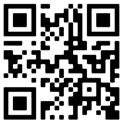
Thank you for following us and I hope you enjoy this publication.
Sincerely,
Steve “The Hurricane” President and CEO Home Care Evolution steve@homecareevolution.com 848-444-9865“But seek first the kingdom of God and His righteousness, and all these things will be added to you.” Matthew 6:33

Richele Wilkins is the owner of Caring Hands Home Health, Inc., a thriving home care agency that has been serving Central North Carolina for over 20 years. With an impressive 28-year career as a nurse, Richele possesses a wealth of knowledge and expertise in caring for the elderly and disabled. Recognizing the importance of passing on her knowledge and experience to the next generation of caregivers, Richele takes great joy in teaching and mentoring new caregivers. Richele’s impact extends beyond her role as a healthcare professional. She is the esteemed host of the AARP-sponsored Talk Show “Inside The House,” where she delves into topics related to aging, caregiving, and overall well-being. Her ability to engage audiences and provide valuable insights has made her a sought-after motivational speaker. Richele specializes in delivering empowering speeches to women and business owners, sharing her own journey and inspiring others to pursue their passions, overcome obstacles, and achieve their goals. As Richele continues to make strides in her career and make a difference in the lives of others, her future shines brightly.


https://www.caringhandshhc.com/
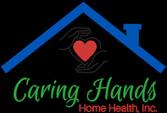 Richele Wilkins
Richele Wilkins
In today’s rapidly changing business landscape, it is a remarkable achievement for any company to reach the 20-year milestone. However, through visionary leadership, relentless adaptation, and a trust in God’s ultimate plan, Caring Hands Home Health, Inc. has defied the odds and thrives. Caring Hands has successfully weathered economic downturns, administrative and caregiver turnover, and shifting market trends by fostering a culture of creativity, collaboration, and continuous improvement. As the company celebrates its 20th anniversary, it stands as a testament to the power of perseverance, adaptability, and unwavering commitment to excellence.
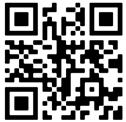
several promotions, I became Unit Director of Nursing of the largest nursing home in Greensboro, NC. I felt accomplished, but now I was struggling with watching residents deteriorating quickly upon admission, and many of them constantly lamenting about wanting to be home. After a few phone calls to the state and many I’s dotted and t’s crossed, in 2002, Caring Hands Home Health, Inc. was born. As a business owner of a home care agency, now I had not only found my niche, but I had found my passion.
They say the days are long, but the years are short. I find that to be so true, as I look back on over 20 years in the home care industry. I have watched countless businesses come and go. I narrowly escaped being one of those that did not make it myself.
I started my nursing career with a short stint in the hospital, but I quickly realized that was not the healthcare genre for me. My next position was as an assessment nurse in a nursing home. I fell in love instantly. I had found my niche...caring for the elderly and disabled. After four years and

I started Caring Hands, focusing on caring for veterans and Medicaid clients. We grew very quickly and by 2008 revenue was 1.5 million, but we had little profit. By all standards, I knew I had a great and viable business, but it was stagnant. Then in 2012, now at 250 clients, 200 employees, and 2.5 in revenue, the bottom fell out. One of my Medicaid payments completely stopped, and I found myself quickly in debt, unable to pay my employees, AND in tax trouble. This is the backdrop to the three golden nuggets I want to share with you. Three pillars that I stand on and that I believe got me through the most challenging of times.

For the first 12 years of my business, I relied solely on Medicaid, placing all my eggs in one basket. On top of that, our administrative team was not operating at its maximum capacity, and we lacked clear objectives. To paint a clearer picture, we found ourselves stagnant, struggling financially, and trapped in a limited mindset. These obstacles and a sudden financial crisis created a scenario where Caring Hands faced the risk of perishing.

By 2016 I thought all hope was lost when I was led to watch “A Drink with the Hurricane.” Watching those videos sparked a spirit of evolution in me for the reinvention of Caring Hands. The initial phase
of Caring Hands’ evolution involved diversification as a strategic move. It was time to mitigate our risk by incorporating new payer sources, particularly private pay clients. Additionally, we strengthened our business stability by offering caregiver training to develop a capable and caring workforce. By focusing on these two aspects of growth, our agency experienced a comeback that was better than I could have ever expected, and we quickly regained our financial stability. However, these were just a couple of the significant changes we implemented. By embracing continuous improvement, we increased our opportunities to take advantage of new trends, expand into new markets, and adopt innovative technologies, positioning ourselves for long-term progress and success.
Take the time to build a strong team. As your business grows, you’ll need to hire and manage a capable team of caregivers and administrative staff. Learn effective hiring and teambuilding strategies to ensure you have a competent and compassionate workforce. Develop leadership skills and create a positive work culture that fosters growth, motivation, and collaboration among your team members. It’s important to have a clear vision of where you want your home care business to go. Set specific goals and objectives for your business, both short-term and longterm. Regularly review and revise these goals as you progress and gain new insight.
You will never become. You are always becoming. Stay fluid and ready for change and evolution.
Professionally and personally, your evolution is an ongoing process. You are constantly adapting, learning, and growing to meet the changing needs of your business, clients, and industry.
A wise man once told me, “Why reinvent the wheel when you can copy genius.” (Steve The Hurricane) The blueprint for how to run a successful home care agency was created by many who have come before us. We simply need to tap into and get connected to the source of the wisdom, knowledge, and experience that can show us the way. I remember the day I finally made the decision to go all in, to get connected. I hired a marketer, signed up for coaching with Hurricane
Marketing Enterprises (HME), and so our journey began.

Getting connected meant in-depth training and one on one coaching. With our coach’s direction, we created an action plan that outlined the steps needed to reach our desired outcomes. Breaking down goals into smaller, manageable tasks made it easier for us to take action and maintain accountability for progress. To stay on track, we had weekly sessions to review progress, discuss challenges, and celebrate achievements.
Getting connected also brought accountability. I truly believe that accountability was the game changer. Whenever I reflect upon my past achievements in attaining a state of improved well-being and shedding excess weight, I realize that
the presence of an accountability partner accompanied every instance of genuine success. Our coach/ accountability partner introduced tracking tools and other techniques to help monitor our progress. Having tangible evidence of our efforts kept us accountable and motivated. Our coach’s industry expertise helped us save time and resources by helping us avoid common pitfalls and make informed decisions.
Staying connected added a value that cannot be matched. You are not alone. There are many ways to tap into established networks of experienced entrepreneurs, even those specific to home care. Leveraging these networks can help you establish valuable connections, find reliable partners, and reach potential customers more
effectively. This can be particularly useful in a competitive market where building relationships and trust is crucial. Learn from the success and failure of knowledgeable individuals who have been in the home care business for a while. By tapping into their experiences, you can learn from their achievements and mistakes. Understanding what worked well and what didn’t can provide valuable lessons and insights, allowing you to avoid unnecessary experimentation and improve your chances of success.
We’ve already discussed having a mindset of evolution. Home care is an evolving industry with new trends and innovations constantly emerging. Experienced individuals can help you stay updated on the latest developments, technologies, and practices. This knowledge can give you a competitive edge by enabling you to adopt new strategies, improve your services, and meet the changing needs of clients more effectively.
In summary, leveraging the expertise of knowledgeable people in the home care industry can save you time, resources, and potential mistakes. Their insights, connections, and guidance can help you navigate the business landscape more effectively, improve your decision-making, and increase your chances of long-term success.
At Caring Hands, I realize the importance of maintaining a strong connection to training and accountability through various channels. This includes the invaluable coaching from Home Care Evolution and the support from hundreds of other home care agencies we can engage with through their network
of knowledgeable owners and marketers.

Beyond the tangible tools and strategies, an often overlooked but powerful force lies in faith and prayer. When I had to confront the critical reality that the survival of my business was at stake, I felt helpless and hopeless. It was the darkest time of my life. Faith and prayer met me at a place where evolution and connection could not... complete surrender. By surrendering my business to a higher power, I acknowledged my limitations and invited divine intervention. This surrender, then and now, frees me from self-reliance and opens boundless possibilities as I align with a greater plan.
I invite you to step out on faith. This involves taking bold and courageous actions, even when the outcome is uncertain. It means trusting in God’s plan and believing He will see you through the challenges. Trusting in God does not guarantee that everything will always go smoothly in your business. There may still be challenges and setbacks along the way. However, by placing your trust in a higher power, you can find peace of mind, the strength to endure difficult times, and the resilience to rise above adversity. Regardless of your religious or spiritual beliefs, the act of connecting with a higher power can bring immense clarity, guidance, and strength.
In moments of darkness and doubt, I find comfort in the embrace of a higher power. I have witnessed God’s miraculous intervention in my business, lifting me from despair
and renewing my determination. Embrace the transformative power of meditation and reflection, connecting with the sacred. Prayer becomes a powerful tool in times of hardship. Through prayer, you can express your concerns, fears, and desires to God. It allows you to seek guidance, find clarity, and ask for assistance in navigating through the challenges you will face. By entrusting your business to a higher power, you are acknowledging that there are circumstances beyond your control and that you need divine intervention. May your journey be blessed, guided, and aligned with divine purpose.
The 3 golden nuggets. I call them golden nuggets because they are precious, timeless, and although simple will add value in business and in life. Reaching the 20-year milestone in business requires a unique blend of evolution, connections, and conviction. Understanding your evolution is an ongoing process, while connections to knowledgeable individuals provide valuable insights and support. The power of faith, whether expressed through prayer or personal reflection, offers the resilience and inspiration needed to weather storms and pursue long-term success.
As you embark on your journey, remember that success goes beyond profit margins and balance sheets. By embracing these timeless tools, our businesses will create a legacy that extends far beyond their years, leaving an indelible mark on the industry and the world.



 Linda Leekley
Linda Leekley

In her leadership role at HCP, Linda pulls from her decades of experience—in nursing, education, and entrepreneurship. In 1998, after years of working as a nursing supervisor and clinical educator in both acute care and home health care, Linda founded the healthcare training company, In the Know. For over 20 years, she demonstrated her passion for healthcare education by developing an ever-growing library of interactive, engaging, and effective training courses. In 2020, In the Know and HCP merged to create a powerful suite of management tools for pre-and post-acute organizations. As CCO, Linda guides a large team of nurses and instructional designers in their ongoing efforts to produce the highest quality training in the industry. When not working, Linda enjoys spending time with her family (including eight grandchildren) and exploring the beautiful beaches of North Carolina.
https://www.homecarepulse.com/

“As valuebased care comes to home care, “satisfactory” performance will no longer cut it. To improve care outcomes, agencies must develop care professionals who offer exceptional care and who serve as ambassadors of your organization. This requires the confidence from high-quality training and a well-planned career ladder.”

Last year, HCP surveyed over 80,000 employees and asked them to rate their agency across seven categories. “Training Received” scored second lowest on the list. This should raise a red flag for every home care administrator. The post-acute care industry ranks among the top five industries with the highest workforce shortages, which makes improving your training the long-term solution to an industry-wide staffing deficit.
Home care agencies help manage their communities’ health with an emphasis on improving outcomes for clients with chronic conditions. These clients might otherwise be the most frequent hospital users and incur the largest share of healthcare costs. As value-based care comes to home care, “satisfactory” performance will no longer cut it. Agencies must develop care professionals who offer exceptional care and who serve as ambassadors of the organization, which requires the confidence that comes from high-quality training and a well-planned career ladder.

A career “ladder” implies that there are defined “rungs” or steps that must be climbed to become an expert in a given role. As employees ascend a learning ladder and gain knowledge, experience, and confidence, they move through the five levels of competence:
● Novice
● Advanced Beginner
● Competent
● Proficient
● Expert
Making decisions that impact your client population relies on understanding and engaging your workforce at their current levels and planning for their continual achievement. A career ladder helps your organization understand where each employee stands and how best to utilize each person’s knowledge and strengths.
A career ladder equals training, recognition, and increased wages as a circular process. Here’s how to create one:
1. Perform a skills assessment to determine your employees’ learning needs.
2. Choose courses that fill your staff’s learning gaps across various topics.
3. Increase training engagement by allowing your staff to complete specialized courses related to their own interests.

4. Reward and recognize employees as they reach each rung of the ladder.

5. Repeat the four-step process at 60 days, six months, and then annually
Showcasing your career growth opportunities is the key to solving the industry-wide employee shortage and critical to improving your agency’s quality of (and capacity to deliver) care. Implementing a career ladder for your staff means:
● Easier recruitment and retention of new staff
● Increased teambuilding success and bonding opportunities when you include mentoring or having a “class” of learners at each ladder level who interact with each other
● Increased employee satisfaction/ retention
● Improved organizational culture— one that prioritizes communication, teamwork, respect, and selfconfidence
● Improved quality of care and quality of life for your clients stemming from increased clinical skills
The bottom line is better outcomes for clients.
● Personal and sustained relationships between administrative and field staff are critical to the success of a learning ladder. You can’t just assign courses, forget about it, and expect a magically motivated workforce. It requires buyin and support from the top down.
● Recognition of all your employees have accomplished, such as a graduation ceremony (with invitations to family members) or special pins or badges that serve as a designation of their achievement.

years. In contrast, healthcare workers are always in demand. And, because the U.S. population is aging, the opportunities for a satisfying career in post-acute care will only continue to grow.
As you develop your organization’s career ladder, focus on career counseling. For many care professionals, the career counseling provided by your organization may be the first career advice they have ever received.

Every agency should individualize its career ladder based on their client population. However, certain topics are recommended for any learning ladder, including:
● Soft skills training to promote empathy, better customer service, and person-centered care

● Clinical/job function training to enhance job performance, increase confidence, and improve client outcomes

● Distinct career tracks to attract candidates with different career goals, such as separate pathways for:
● Advanced care professionals (for people who want to remain in the caregiver role)
● Becoming a mentor/team lead
● Moving toward a nursing career
● A career in home care administration
Each track should have an inspiring mission and its own learning ladder defined by specific training requirements, financial rewards, and public recognition.
Many care professionals are eager to advance their careers but may not see a way forward.
Being a caregiver has historically been viewed as a dead-end job; the key is to provide a clear path to career success. Paint a picture that shows the real dead-end jobs are options that might pay a bit more in the short term—restaurant work, delivery services, retail—but do not enrich the employee’s skills or empower them to advance in the field. Those other jobs ride the waves of the economy and other world events. We saw that during the height of the pandemic, with restaurants and stores closed for months or even
It’s equally important for your office staff and supervisors to have career growth opportunities as well. Supervisory training enables office and/or nurse supervisors to:
● Know how to assess the learning needs of the care professionals on their team
● Recognize care professionals who have increased clinical and communication skills
● Support the career ladder and your organization’s culture of learning
Remember: Career ladder initiatives are unlikely to succeed without the support of the administrative staff!




So, are career ladders worth it? Find out by tracking outcomes pre- and post-implementation of your career ladder using the following metrics:
● Recruitment
● Retention
● Hospital readmissions
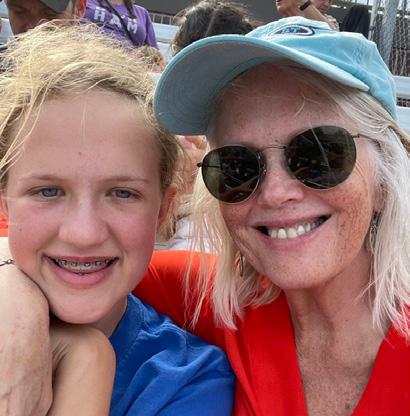
● Improved functioning with ADLs

● Overall client satisfaction
Investing in their employees through career development and advancement leads to increased productivity, reduced turnover, and higher employee morale. This investment provides an agency with a pool of more experienced, qualified employees who can take on higherlevel positions and responsibilities. Ultimately, this results in an improved ROI for the company, care provided at the highest level, and a positive impact on every home care client.
Get self paced industry training for as low as $97 per month.
Home Care Evolution Daily is a self guided program with weekly tips and strategies!

It’s time to stop the guesswork.
Subscribe to Home Care Evolution Daily today and you’ll get:
• Exclusive Video trainings
• Strategies designed to help you build your business and get more clients
• Templates making it easy to implement and get results

• Proven Marketing Methods tested and proven by 100’s of home care businesses Monthly Private Webinar Training keeping you up to date on what’s working NOW Private Facebook Marketing Group giving you support, accountability, and a direct line of Weekly Marketing Tips direct from the best in the industry

Never get stuck guessing what to do next for your business.
Sign up for Home Care Evolution Daily today.





Joe Kotora is a Captain in the United States Navy Medical Corps and an emergency physician specializing in emergency medical services (EMS) and disaster medicine. He was born and raised in East Brunswick, NJ and attended Stockton University, The University of Medicine and Dentistry of New Jersey, and Rutgers University. He is currently assigned as the Battlefield Medicine subject matter expert to the Pentagon’s Military Warfare Experts Group (MWEG), within the Office of the Undersecretary of Defense-Policy in Arlington, Virginia.
 Joseph Kotora
Joseph Kotora
Honor. Duty. Sacrifice. Patriotism. If you ask any veteran why they served their nation in either time of peace or war, they are likely to answer with at least one of these words as their primary motivator. An estimated 16.5 million veterans call America their home. While this figure may sound large, U.S. veterans comprise a mere 6.4% of the nation’s adult population. 13 million veterans are in the over 50 years old age demographic (Gilligan, 2022). Hence, interactions between the veteran population and U.S. healthcare infrastructure are frequent.
So, what does a typical U.S. veteran desire in his or her healthcare from those who provide it? I have asked myself this question multiple times throughout my 20-year career in emergency medicine and healthcare leadership. Working on and around major U.S. military installations has afforded me ample opportunities to ask service members from all five services. Surprisingly, with very few exceptions, I receive the same answers time and again.

Regardless of a veteran’s military occupation or service, the military ethos is built on the fundamental tenant of trust in themselves, among their comrades, within their leadership, and within their nation. Service members ranging from the most elite special operators to the most junior recruit graduate have learned to inculcate trust into the fabric of their lives. It is the bedrock of military culture and the guiding principle behind every military unit.
It should come as no surprise that veterans value trust in
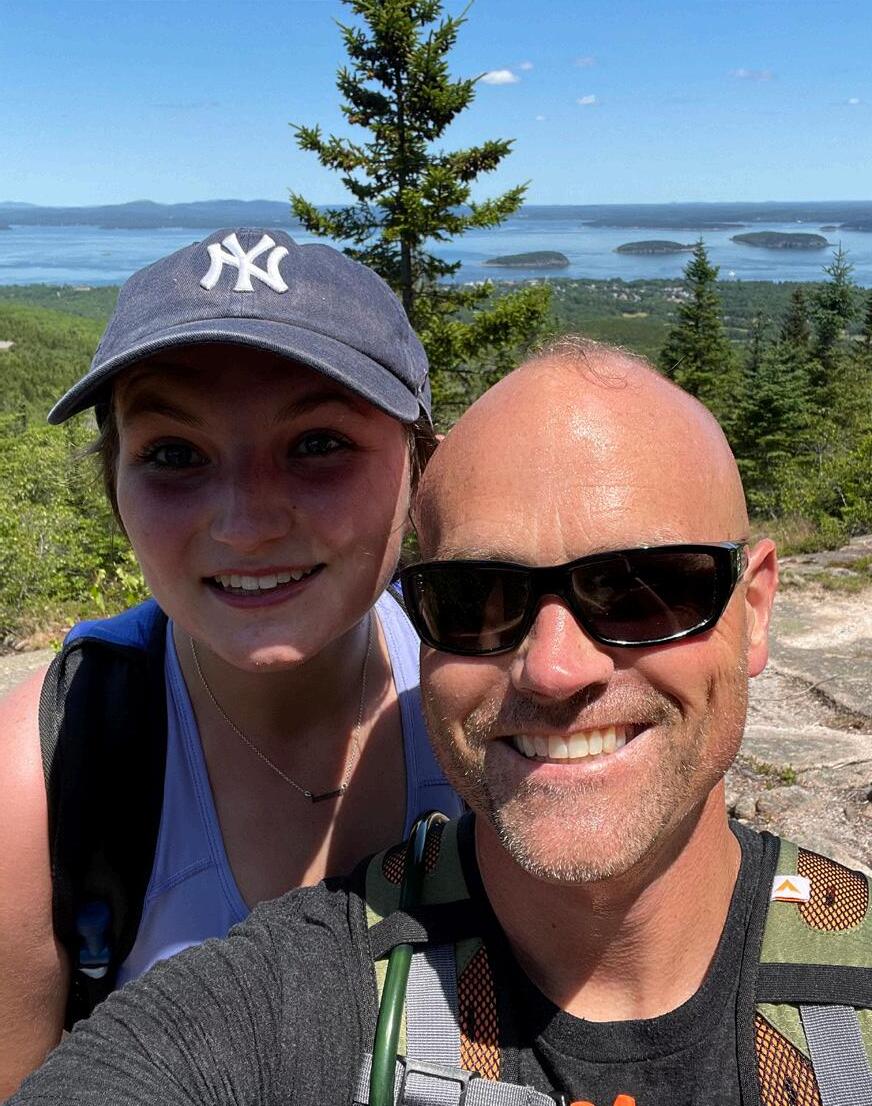
their relationships with their medical providers and their healthcare team. Like any other relationship, trust must be earned. It is never simply given. Earning a veteran’s trust involves straightforward communication, demonstration of respect for one’s intelligence, and integration of their wishes and desires into their plan of care or treatment. Most U.S. veterans have been tasked with grave responsibilities, often from a very young age. They are used to making difficult decisions, have respect for
time-compressed decision cycles, and understand the need to operate with a sense of urgency. The more involved and literate they are in their own care, the more they will trust their providers.
As humans age, our performance, mental agility, and independence often decline. We become more reliant on others to perform tasks or execute activities of daily living. As our bodies begin to fail us, our minds often remember what we were like in
our prime. The 75-year-old Vietnam veteran who was once the face of courage and physical toughness now requires help with feeding, bathing, and walking. This can be devastating to those who were viewed as living gods by the men and women they once led and commanded.
Healthcare providers need to be empathetic to the feelings of frustration, shame, and loss of dignity that can accompany a veteran’s decline in physical health. Simple actions such as calling them by their rank (i.e., Sergeant, Chief, Captain, etc.)



or encouraging their performance in physical therapy or group exercise can often help restore their dignity. Demonstrating care and concern for their morale and well-being motivates these heroes while giving them a sense of renewed purpose. Unsurprisingly, as their mental attitude improves, their chronic diseases often improve as well.
If you go to any Veteran’s Administration clinic, hospital, or long-term care facility, you are bound to run into a war hero or two. Their life



stories could easily be the script for a Hollywood production film. Among their personal possessions, you are likely to find some of our nation’s most coveted military medals and decorations, such as the Congressional Medal of Honor, the Navy Cross, or the Silver Star.
As a junior doctor onboard Naval Medical Center Portsmouth (Virginia), I vividly recall my many interactions with Master Diver Carl Brashear, USN. Many know him as the first African American to graduate from the United
States Navy’s Diving & Salvage School in 1954. His life and career were later portrayed by Cuba Gooding, Jr in the feature film Men of Honor. I entered residency in June of 2006, and Master Chief Brashear was one of my very first patients. I remember my excitement when I was assigned to his case, having watched the biographical film a few years prior. The ink was barely dry on my medical school diploma, and here I was caring for a celebrity! I remember going to his hospital room to round on him during his admission. I walked in to find a group of Navy Corpsmen huddled
“It should come as no surprise that veterans value trust in their relationships with their medical providers and their healthcare team.”
- Joseph Kotora
around his bed, intently listening to every word he said. I introduced myself and exclaimed it was an honor to care for him. His response floored me; “Son, I’m no different than any other Sailor you are going to see today.”
A few days later, Master Chief Carl Brashear died of heart failure. He was a legend in the United States Navy and attained profound accomplishments under arduous conditions. Despite these accomplishments, I will forever remember how he viewed himself in that hospital bed, a Sailor in the United States Navy. He left an indelible impression on me that continuously
reminds me of the importance of humility and humbleness. He, like many other military heroes, do not see themselves as extraordinary or superhuman. Rather than boasting about their military service and accolades, they will usually say something very simple like, “I was just doing my job”, or “I was just in the right place at the right time”. They are grateful for the respect and admiration offered to them but prefer to live a peaceful and humble life.
There is no subpopulation of Americans that demand honesty and integrity

from others more than the veteran community. For U.S. servicemembers, there is tremendous value in saying what you mean, and meaning what you say. Unfortunately, every single one of us will eventually die. The date, time, and circumstances of our death are known only to God; however, we can often predict with a fair degree of confidence when it is sooner rather than later. Veterans preparing to make the transition from this life to the next value honest communication regarding their condition and their prognosis. It is common to hear a veteran say, “Just give it to me straight, Doc.” Hence, it is imperative that care providers are up front and honest with veterans when end of life decisions must be made. Candid, clear communication regarding palliative care and terminal disease treatment plans usually increases a veteran’s trust in his or her provider. While it may seem humane to avoid these conversations or skirt around the issue, a refusal to confront these difficult circumstances only increases anxiety and makes the dying process harder.
Healthcare providers who are privileged and blessed to care for veteran servicemembers are likely to find these interactions the most rewarding of their careers. There is no group of Americans more appreciative or deserving of excellent medical care across the continuum of life. By earning their trust, treating them with dignity and respect, and being honest and candid about their care, you will develop intense bonds with these patients that continue to nurture you personally and professionally long after they cease to be your patients.


Julie Visone is a mother, kickboxer, and senior living lover. She grew up in the home health care industry, starting when she was 25 years old. She’s been involved in therapy, technology, and diagnostics. Most importantly, she’s been involved and seen the success of incredible health care collaboration. If there is one thing she’s learned, it’s that working together in a cohesive manner provides the ultimate care for our older adults.
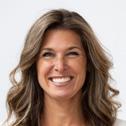
https://www.arcdiagnosticslab.com/
 Julie Visone
Julie Visone
“Show me your friends and I’ll show you your future”
I say show me your power partners and I’ll show you your success.
In this industry it truly takes a village. To positively affect someone’s life you need to have top notch players in every capacity of healthcare working hand in hand.

Everyone, from the resident’s senior living community, to their physician, their pharmacist, their diagnostics team, their therapy team, and their home care team are touching a person’s life. We all have the ability to give that person better care together than we ever could alone. If you surround yourself with a team whose goals are aligned and who share mutual respect for one another you are bound for success.
Working together is not only what’s best for the resident, but also best for everyone’s overall experience. I love nothing more than to lean on rock stars in the industry. We all have different skillsets, and we all share different expertise throughout different facets of healthcare. Why not bring people who are experts in their specific offerings together so we can all offer optimal care? It often amazes me to learn how much someone may know about their role in healthcare that I had no idea about. This is exactly why it pays for us to lean on each other. This allows us to collaborate and mesh years of experience in different fields together for the greater good of the whole. On top of all that, it’s fun! I find when you’re
looking for the people that are the best in their health field it usually correlates to how passionate they are as a person. There is nothing more infectious than getting a group of positive, passionate people together who want to be innovative thinkers with the goal of providing optimal care.
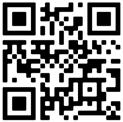
Beyond care, collaborating with good health care partners is also a terrific way to help market all services! Coming up with unique marketing events, whether it’s a DIY workshop in a senior living community or a creative way to engage the residents, allows us to work together to increase brand visibility. It also attaches feelings to what people associate with our companies. If you’re the team that comes in with different smiling faces from different companies all to make their day a little better, those residents are going to associate happiness with all of you. People may forget what you said, but they will never forget how you made them feel. Collaborating with different people in the industry also allows for more outside of the box thinking. I’ve had many brainstorming sessions with fellow health care providers where the end result is a combination of all
our thoughts and something we never would have thought of individually. This allows for creative and memorable touch points for our older adults, senior living communities, and outside community as a whole.
What’s better than standardizing one vertical of health throughout a senior living community portfolio? Standardizing several best-in-class partnerships who all work together! Senior living operators have a ton on their plates so anything we can do to make their lives easier while also providing the best care for their residents is a win across the board. When health care “vendors” (yes, I use that term lightly) have synergy, the experience to the operator should feel seamless. Open lines of communication and trust in one another allows the operator to feel the inclusive approach. Standardizing care also limits variance, so an operator should expect the same high-class service throughout all their communities. With benchmarks in place, an operator should also be able to see the success of each community

- Mark Ambrose
compared to one another. This visibility allows for accountability. If the expected caliber is not being delivered in a certain location, there is no hiding it. This oversight sets a standard for excellent health care.

An inclusive approach with bestin-class partners also cuts down on repetitive conversations and relaying of information. When the partners involved have a genuine relationship and trust in one another, the best interests
Working together with aligned partners providing health care for residents allows us to be proactive in our approaches. The home care partner may notice the resident has become unsteady and is relying on wall support or rails more often than normal. They can immediately alert the therapy company who can work with the director of nursing and physician to get an evaluation. Working together may have just prevented a fall that may have led to a hospitalization. When care partners are all in sync and constantly communicating, alerts such as this result in immediate action.
hip or hospitalization, and clears up why cognitive behaviors are occurring before changing levels of care.


The absolute best part of working together to offer exceptional care for our older adults is seeing the success that comes out of it. Watching residents whose lives we’ve touched thrive in their environment because of collaborative work should be celebrated! Pictures, videos, and testimonials to spread the good work we’re all achieving together are the best marketing campaigns you can imagine. People who are now living their best life – possibly a life they didn’t think was even possible, is the best success any of us can hope for.
of the resident always shines through. This allows for senior living operators to get time back (an invaluable asset) and accomplish their goals with everyone aligned. When health care partners are seamlessly working together it also prevents resident’s healthcare needs from falling through the cracks.
Collaborative efforts also allow us to track outcomes in a more wholistic way. It is a beautiful feeling when an older adult starts thriving because of multiple healthcare interventions. You may be catching the UTI a few days earlier because of the outstanding home care aid who informs the director of nursing who immediately lets the physician know. The physician, who has a seamless relationship with the diagnostics company orders the test. Because the physician ordered a molecular test instead of a culture from a diagnostics company with rapid turnaround times, the physician is able to obtain the results within 24 hours. Because of these aligned relationships the resident is now correctly medicated with the best antibiotic therefore eliminating potential unnecessary falls and cognitive deficits. This then puts less strain on the frontline staff, eliminates a potential broken
We are all in this together. Better delivery of care for our patients and residents and more success is guaranteed when we’re working with each other, not against. Bring your own unique skillset to the table and embrace what others bring to create your own elite power team health care continuum.




Steve “The Hurricane” Weiss is a dynamic and entertaining public speaker, known for his expert knowledge in all things sales and marketing. From a young age, Steve has been driven to succeed and excelled across vastly different industries. Steve founded Hurricane Marketing Enterprises in 2012 with a goal to help other business owners around the globe. Steve’s passion is to lead business owners on the path to find people in need of their services and convert these prospects into clients. His company’s mission statement is to help business owners increase their census, revenue, and profits. Through his programs and presentations, he has guided thousands of individuals to grow their organizations and continues to help them blow away the competition. With his dedication and hard work, Steve has developed a foolproof program that enables start-up companies to quickly get ahead of the competition while helping existing businesses experience an explosive transformation. Many of his clients double and even triple annual revenue in as little as 6 months.
https://homecareevolution.com/

The biggest takeaway from the 2023 Home Care Pulse benchmark study was that the median profit margin for all agencies was just shy of 10% at 9.7%. And while this number is higher than it was last year, it still shows the sign of an industry that is one mistake from going out of business.
If you studied small business economics in college, you know that a small business should profit between 18 and 22% in order to grow and thrive. These resources are far greater than just money in the business owner’s pocket. Rather, these resources can be used to increase salaries of hard-working staff, expand to open multiple locations to serve more patients, can be used as retention pieces to keep our caregivers working for us, and so much more. It is imperative that the trend continues to grow. So, as a result here are four tips that you can do to help increase your profit margin this year.

I know this sounds obvious, but I also know this is the most unpopular decision of them all. Our patients need us. We don’t like charging more money. Most people don’t like charging what they currently are charging. In addition to this, we also understand that rising costs diminish the number of people who can afford our services. I understand. However, with the economy being what it is everything has gone up significantly. Airfare, food, utilities, rent and housing, etc. You name it. The cost of goods has increased. The cost of services has increased. Therefore, the
quick fix here is to increase what we’re charging so that we can make up the difference.


Now this can be accomplished two ways. First, Urgent Start situations. When someone contacts you to start up care immediately (within 72 hours) this requires an “All hands on deck” scenario, where everyone in your organization must stop their day to day responsibilities and work on staffing this case. There is a huge cost associated with the loss in productivity when this happens. The results, charge a start up fee in this instance to cover that cost ($100-$500 depending on your market).
Second, Sliding Scale. This mirrors what Assisted Living Communities have always done. They charge a fee that is relative to the level of care required to manage their resident. The same applies here. There is a huge difference in the care needs of a Companion Level patient vs. a
Medically Complex one. We should be charging the difference (and compensating the CG doing the work for their expertise).
These two changes can make an immediate impact to both the bottom line and your ability to staff those cases with ease.

One of the statistics found in the Home Care Pulse report that really jumped out was that the median agency surveyed had 1 scheduler for every 731 hours billable that the agency provides. This is a very, very

that are getting 15 hours of care, this comes to only 750 hours per week. Conversely, when you have the same 50 patients but averaging 40 hours of care, this comes to 2,000 hours billed, which is significantly more revenue. Most of my clients that I work with now average 40 hours per week per patient which is significantly higher than the industry standard. In order to accomplish this, you must have a strong sales and marketing department.
One of the statistics in the Home Care Pulse report showed the revenue generated per caregiver. Across
your caregivers are able to service 3 patients, meaning they transition from their first patient to their second and then eventually from their second to their third, this will significantly increase the revenue generated per caregiver, making your business much more efficient because of your ability to retain caregivers.
All throughout the Home Care Pulse report they show statistics on your ability to be able to retain caregivers as the number one way to increase your profits without adjusting anything else to your organization. Things such as having a longer cancellation period, making sure that you retain

low number from what my clients experience. Agencies really should be closer to 1,200, 1,500, maybe even 2,000 hours per scheduler. Another stat showed how many office staff members there were for the revenue generated. In this stat it showed that agencies with less than $3M in annual revenue were overstaffed, by my standards, about 5 staff members for every Million in total revenue. Why do these stats matter? Because it shows that most agencies surveyed have a low number of hours per week per client (I would guestimate around 20 hours/client/ week). If you have 50 patients on your census it requires a certain number of office staff members to manage. However, if you have 50 patients
the industry, it declined from what it was the year before, especially in the Masters subcategory. The Masters last year had an average caregiver generating $28,000. In 2023 the report shows that the Masters caregivers generated closer to $20,000 which is an $8,000 reduction. This is because of the increase in overall caregiver turnover as the industry rose by almost 8%, now to 77%.
The goal that I have all of my clients work on is to be able to retain a caregiver so that they service 3 patients during their tenure with your company. If your patients are averaging 40 hours per week as mentioned in the previous tip and


the caregiver’s salaries between cases, having shift work, and obviously having a steady flow of referrals coming in makes it easier to reassign caregivers. All of these things and more will make it easier to retain your caregivers.
In many of the courses I teach my clients, I always begin these courses with knowing your KPIs, those key performance indicators. When you manage your efficiencies, checking your statistics on a quarterly basis, you can easily identify where you’re leaving money on the table. For example, in sales and marketing, when people are spending money on Google AdWords and they’re
not checking on the inquiries and conversions, this leaves almost 50% revenue on the table. Making sure that you track your inquiries will go a long way to helping make your sales and marketing KPIs much more efficient. In recruitment and the retention people are throwing money at every possible way to get caregivers, yet they’re not tracking to see just how much money they spend to acquire every single caregiver or what are the efficiencies of those caregivers once they start working. Are they hiring caregivers from places that cost a lot of money, and then the turnover rate is also very high? Maybe allocate
generating the sales revenue coming in. All of these things add up at the end of the day. And if you’re able to add 2% or 3% back to that bottom line without charging more because of these changes, it will have a huge impact on the overall profitability of the business.



Those are your four tips right here. Ranging from increasing price, which I know is least popular, to the other four, which just have to do with efficiencies. When you add up each one if you’re able to increase your profit by 2%, this right here will free up 10% additional profit and now make your business have the profitability that it should, allowing you to expand
and do the things you want to do, such as serve more patients. If you want help with how to do the things discussed here, check out our website homecarevolution.com. Schedule an appointment for a demo and let us help you blow away the competition!


those funds into sources that have a higher retention so that will allow you to be more efficient
Finally, efficiency in the dollars that we are spending in all areas of our business. Are we spending too much money on our software? Are we spending too much money on things that overlap? Are we not using the software that we have to its fullest capabilities so that we don’t need to add other service providers to be able to operate our business? Are we checking our merchant service fees? I had a client who was able to save $20,000 by making a switch to a different merchant services provider because they charged a much lower fee for

Have you experienced any of this?
• 100 hour weeks
• Struggling to recruit and retain caregivers
• Stress from trying to keep up with the ever changing rules
• Wanting to grow but not being able to staff cases



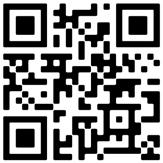

 Sandra Glandt Productivity Coach, Author, and TV Host
Sandra Glandt Productivity Coach, Author, and TV Host

Sandi Glandt is a high-performance productivity coach, wife, mom, best-selling author, and tv host. Using realistic time management strategies, she helps modern working women manage everything on their plate to be present and intentional with the most important aspects of their life. She helps women go from overwhelm and burnout to balance. She is the author of best-selling book & podcast Slay Your Day: How to get more done, become ultra productive, and unlock your full potential! Her clients rave about how Sandi helps them turn their stressed out, busy lives into massive productivity and are now able to “balance” their time to do it all. Sandi Glandt also holds the title of Mrs. International 2022. She promotes her platform Slay Your Day globally to share her S3 framework of systems, strategy, and support to help men and women step out of burnout and into their full potential. Sandi is happily married to husband Jarrod Glandt and together they have two incredible sons, Jacob and Jordan. Together they reside in sunny Hollywood, Florida where they love to enjoy days at the beach, the water park, and just enjoying time together in their backyard.
https://www.sandraglandt.com/welcome
Being a working mom can be incredibly rewarding, but it can also be incredibly challenging. Juggling the demands of work, home, and family can leave you feeling drained and overwhelmed.
As a High-Performance Coach, wife, mother, best-selling author, TV host, and Mrs. International 2022 I have a lot of roles and responsibilities that are important to me. It has only been through creating the right systems, strategies, and support that I am able to successfully and fully show in the areas that are important to me. I am going to share with you tips and tricks that I incorporate into my own life that have allowed me to truly step into my power and purpose in every area of my life (and it’s much easier than you may think!).

Work-life wellness is the concept of intentionally prioritizing the areas of your life that are most important to you and showing up present and fully in those areas. It’s about aligning your values, goals, and actions to create a fulfilling and full life, rather than simply striving for balance between work and home life. Work-life wellness recognizes that different areas of our lives may require different levels of attention at different times, and speaks to being intentional about how we allocate our time and energy. Ultimately, work-life wellness is about creating a sense of alignment and purpose in all areas of life, so that you can feel fulfilled and satisfied in the things that matter most to you.
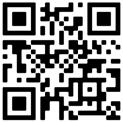

Many of my clients are accomplished and ambitious working mothers. They strive to maximize the hours they spend at work or with their families to make the most of their time.
Work-life wellness is particularly important for working moms because it enables them to show up fully in their careers and in their
families. When working moms prioritize work-life wellness, they are better able to manage the competing demands of work and family, which can reduce stress and burnout. By setting boundaries around their work schedule and delegating tasks at home, working moms can create more time and space to focus on the things that matter most to them. This might include spending quality time with their children, pursuing their own personal interests or hobbies, or simply just taking time for some self-care.
In addition to reducing stress and improving overall well-being, work-life wellness can also have a positive impact on your career. When working moms are able to show up fully and authentically in their careers, they are more likely to achieve success and fulfillment. By aligning their values, goals, and actions, working moms can create a sense of purpose and meaning in their work, which can lead to higher job satisfaction and a greater sense of accomplishment.
At the same time, work-life wellness can help working moms to set a positive example for their children.
Work-life wellness is important for working moms because it enables them to show up fully in their careers and in their families.
Ultimately, work-life wellness is about creating a sense of peace and purpose in all areas of life, so that working moms can feel fulfilled and fueled in the things that matter most to them.
I want to share some tips with you that you can start implementing in your own life to achieve your version of work-life wellness:
Once you have identified what is important to you, you can prioritize your time strategically and set boundaries where necessary to show up in the areas that are most important and meaningful to you.

Self-care is an essential component of worklife wellness. As a working mom, it’s easy to put everyone else’s needs before your own. However, it’s important to make time for yourself to recharge. Some of my favorite things to do to practice self-care are exercise, meditation, stretching, reading, and breathwork.
One of the most important ways to achieve worklife wellness as a working mom is to prioritize your time. Once you have determined what is most important in your life, both personally and professionally, make those things a priority. This might mean setting boundaries around your work schedule, delegating tasks at home, or saying no to activities that don’t align with your values and priorities.


Setting boundaries is an important way to achieve work-life wellness. It’s important to set boundaries around your work schedule and communicate them clearly with those on your team, in your family, and in your support system. This might mean not checking email outside of work hours or declining meetings that don’t align with your priorities.




Finding support is crucial for working moms. Whether it’s a partner, family member, or friend, having someone to lean on can make a huge difference. Another great resource to consider is joining inperson or online networking or support groups for working moms. If you are looking for an amazing group with tools and resources for ambitious women, feel free to check out my FREE Facebook Group: Productivity Hacks for Busy Working Moms. Another great way to seek support is to seek out a mentor who has successfully balanced work and family responsibilities and find a way to plug in to their mentorship or coaching programs.
Finally, creating a positive mindset is essential for achieving work-life wellness. This means focusing on the positive aspects of your life and work, practicing gratitude, and reframing negative thoughts. By adopting a positive mindset, working moms can feel more energized, motivated, and fulfilled in both their personal and professional lives.
My hope is that this information inspires you to start implementing some tips and tools in your own life, so that you can create your own version of work-life wellness.
I would love to connect further with you. Let’s continue the conversation on Instagram. You can find me @SandiGlandt or you can find my podcast Slay Your Day over on iTunes, iHeart, Stitcher, YouTube, and anywhere you get your podcasts.
You can also grad a FREE resource guide: Big Money Moves that will help any busy entrepreneur identify their exact action steps to have more time and make more money.

Grab Your Free Guide HERE: https://www.sandraglandt.com/ bigmoney
I can’t wait to connect with you and hear how you have implemented these tips!






“Ultimately, work-life wellness is about creating a sense of alignment and purpose in all areas of life, so that you can feel fulfilled and satisfied in the things that matter most to you.”
- Sandra Glandt
 Leah Kosatsky Business Coach Home Care Evolution
Leah Kosatsky Business Coach Home Care Evolution

Leah is a certified Executive & Personal Coach, bringing her extensive expertise and entrepreneurial experience of over two decades in coaching and communications to clients worldwide. With a solid foundation in global entrepreneurship, Leah has honed her skills as a trusted consultant and strategist. Having served as a Business Coach for the Home Care Evolution team for the past five years, Leah has played a pivotal role in mentoring the organization’s executives, coaches, and administration behind-the-scenes. She has closely witnessed their impressive growth.
https://homecareevolution.com/

Finding balance in the fast-paced and demanding world of home care may seem like juggling fiery hot bowling pins on a tightrope. However, work-life integration offers a practical and achievable solution to this challenge. By blending work and personal life, you can create a harmonious and fulfilling existence. In this article, we will explore the meaning of work-life integration, its benefits, and provide practical strategies tailored to your unique journey in home care. As an agency owner, your commitment to exceptional care is commendable. Remember, taking care of yourself is equally important and nurtures both your personal well-being and the success of your agency.
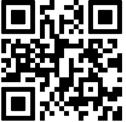
Work-life integration is an empowering approach that recognizes the interconnectedness of your work and personal life. It surpasses the traditional notion of work-life balance, where the two are often seen as separate entities. Instead, work-life integration emphasizes finding a natural and seamless blend between the two, enabling you to experience a well-rounded home life and career. By embracing work-life integration, you can establish a rhythm that accommodates both your work responsibilities and personal commitments. This approach empowers you to set healthy boundaries, create a flexible schedule, and prioritize your wellbeing without compromising the success of your home care agency. Let’s explore practical ways to implement work-life integration into your daily life and discover the myriad benefits it brings.
Stress and burnout are common challenges in the demanding home care industry for agency owners, staff members, and caregivers.
Studies have highlighted the detrimental effects of chronic stress on physical and mental health, including conditions like cardiovascular disease, type 2 diabetes, and cognitive impairments. As a home care agency owner, your
cognitive abilities, memory, and problem-solving skills are crucial. Addressing and managing stress effectively is essential for optimal performance and providing topnotch care. By embracing the principles of work-life integration,

we can tackle stress and burnout head-on, fostering a healthier and more productive work environment.
1. Prioritizing Self-Care: Just as you prioritize the care of your clients, it is crucial to prioritize your own well-being. Carve out dedicated time for rejuvenating activities like exercise, spending quality time with loved ones, and pursuing hobbies. Remember, self-care is not selfish but necessary for your success. By taking care of yourself, you replenish your energy, enhance your focus, and maintain overall well-being, allowing you to be at your best for your agency and the people you serve.
2. Setting Realistic Expectations and Boundaries: Establish clear boundaries between your work and personal life.

Communicate these boundaries openly with your team and clients. Set realistic expectations for yourself and learn the art of delegation. Understand that saying no is not a sign of weakness but a wise decision to avoid overcommitment and burnout. By setting clear boundaries, you create space for both work and personal activities, ensuring each aspect receives the attention it deserves.
3. Promoting Work-Life Integration and Flexibility: Create a company culture that genuinely values work-life integration. Encourage and support flexible work arrangements based on your staff members’ roles, allowing them to balance personal obligations and work commitments. When hiring caregivers, consider posting different shifts on job ads, allowing caregivers to align their shifts with their lifestyle preferences. Fostering a positive and
flexible work environment cultivates trust, loyalty, and job satisfaction among your team members, leading to enhanced productivity and employee retention.

4. Leveraging Technology: Embrace technology solutions that streamline processes and increase efficiency. Automate administrative tasks, implement secure digital platforms for communication, and utilize scheduling software to free up valuable time. By leveraging technology effectively, you can optimize your workflow and create more space for work-life integration.
5. Embracing Work-Life Blend: Embrace the concept of work-life blend, recognizing that work and personal life are interconnected aspects of your overall well-being. Allow yourself the freedom to find synergy between the two, seeking opportunities to integrate work and
personal activities whenever possible. For example, consider scheduling business meetings in environments that bring you joy, such as a local café or park. By embracing worklife blend, you create a sense of harmony and fulfillment that transcends traditional boundaries.
In the words of Maya Angelou, “Success is liking yourself, liking what you do, and liking how you do it.” As you navigate the dynamic world of home care, remember that true success stems from finding harmony within yourself, your work, and your approach. Work-life integration offers a blueprint for achieving this balance, allowing you to build a fulfilling and prosperous business while nurturing your personal wellbeing.
Throughout this article, we have explored the essence of work-life integration and its transformative potential in the home care industry. We have highlighted the impact of stress and burnout, recognizing the need to address these challenges to ensure optimal performance and exceptional care for your clients. Work-life integration is a continuous journey that requires commitment and self-reflection. By adopting practical strategies tailored to worklife integration, such as prioritizing self-care, setting boundaries, promoting flexibility, leveraging technology, and embracing the concept of work-life blend, you unlock the key to a life of fulfillment and success.

collaborative work environment. Surround yourself with support and like-minded individuals who share your vision and values, fostering an ecosystem of growth and shared prosperity. Celebrate your progress along the way, for each step forward brings you closer to a balanced and gratifying existence.
In closing, Maya Angelou’s wise words remind us that success is not solely defined by external achievements but by an inner sense of contentment and selfassurance. By aligning your work and personal life, you create a symphony of fulfillment where your passion for providing exceptional care intertwines seamlessly with your own happiness and well-being. Work-life integration is a continuous endeavor. Be patient with yourself and celebrate every milestone along the way. Take care of yourself first,
better serve your clients, and make a lasting impact in the home care industry.

Remember, you are not alone in this journey. Lean on your team, delegate tasks, and cultivate a supportive and

 Brandi Kurtyka Co-Founder & CEO, MissionCare Collective
Brandi Kurtyka Co-Founder & CEO, MissionCare Collective

Brandi Kurtyka is a nationally recognized speaker in the care industry and the direct care workforce. As CEO and Co-Founder of MissionCare Collective, the parent company of myCNAjobs and CoachUp Care, Brandi’s team manages the largest caregiver community in the nation and connects 3M people to work annually while serving 8K healthcare providers. Brandi actively speaks on the latest research, insights, and data impacting the care workforce bringing people and stories together to drive change to help move care from where it is to where it needs to be.
https://www.missioncare.com/
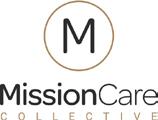
This article is a summary of a recent home care provider study, analyzing the thoughts and perspectives of 450 small to medium sized home care agencies across the nation.
to match other industries. “Despite receiving relatively low wages, a significant 53% of caregivers, many of whom belong to underserved communities, rely on some form of public assistance. They persist in their roles, fueled by a passion to care for people, but their financial hardships can hamper their availability,” Kurtyka elaborated.
The study, available for download, offers a crucial snapshot of the challenges faced today by American home care providers. The participant demographics spanned across various roles, with 82% Owners, 15% Directors, and 3% in other positions.

● A staggering 89% of home care agencies have had to turn away care due to workforce limitations.
● The majority, 76%, believe the industry has not fully recovered from the COVID-19 pandemic.
● More than half, 84%, reported a portion of their clients are reluctant to work with young caregivers.
● Racial bias is evident with 81% of providers indicating a portion of their clients have race-specific staffing requests.
● Workforce recruitment and retention issues have worsened in the past six months for 53% of agencies.
● Nearly half highlighted frequent shift cancellations due to transportation and childcare challenges among caregivers.
“This study carries significant implications, underscoring the pressing requirement to overhaul the culture of our care industry,” said Brandi Kurtyka, the Chief Executive Officer of MissionCare Collective. “It is imperative to build a robust community support system and implement effective policies to enable caregivers to excel in their roles, thereby continuing their priceless service to those dependent on them.”
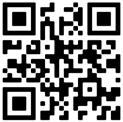
While agencies have escalated wages in the past year, they are yet grappling
Furthermore, the study underscores the impact of specific client demands, like age and race preferences, that intensify workforce strain. It provides an in-depth analysis of the phenomenon of “racial refusal” and the distinct challenges and prospects related to working with younger caregivers.
Small to medium-sized agencies reported declining an average of 510 care hours per month, with a median of 100 hours per month. “It’s deeply distressing for home care agencies to turn away those in need of care. Many joined this profession, motivated by personal experiences and a love for people,” Kurtyka added. “People join the care industry to provide care, and it’s challenging without an adequate workforce to meet the burgeoning demands of America’s swiftly aging population.”
Kurtyka continues, “As the leader of the nation’s largest network of companions, home health aides, and CNAs through our myCNAjobs community, the prospect of

experienced caregivers leaving the industry is a worrisome thought that haunts me. To address the enduring workforce challenges in caregiving, we must unify our efforts. Our approach should incorporate targeted strategies focused on retaining the current workforce, thereby safeguarding the very essence of care.”

The complete report, entitled “Through the Provider’s Lens: A Study on Workforce Dynamics from the Perspective of an Agency”, can be downloaded at

https://www.missioncare.com/provider-study-download.


“To address the enduring workforce challenges in caregiving, we must unify our efforts.”
- Brandy Kurtyka





This book, which already reached bestseller status on Amazon, is designed to help the millions of individuals and their families who must navigate the challenges of caring for aging parents and outline their options.
“Why We Care” provides essential insight into choosing a home healthcare agency from those in the industry, along with stories from real people who found solutions to help their parents age in place with the dignity and grace they deserve.


“This book was written so that we could tell the story about home healthcare for people who need it and the families who have to make that decision,” said Steve “The Hurricane”™ Weiss, co-author of the book, co-founder of the Institute of Dignity and Grace, and CEO of Hurricane Marketing Enterprises.
The book was co-written with home care agency owners and professionals, Haytham Najjar; Lynn Marie Houghton; Sandra Dougherty; Vikki Kalitsi; Judy Loubier, PT, CSA CDP; Nicole Peretti; Krista Gaul; and Kunu Kaushal, CSA. Published by the Institute for Dignity and Grace, “Why We Care – Choosing the Right Home Care Agency” is available on Amazon ($17.99 and Kindle version for $4.99).
Everyone will eventually need some type of home healthcare services and choosing what form that care will take can be overwhelming. “Why We Care – Choosing the Right Home Care Agency,” provides readers with essential information in a positive way on aging parents, aging at home, and aging with dignity and grace.
Proceeds of the book go towards The Institute for Dignity and Grace.
Buy your copy from Amazon here.
https://www.amazon.com/gp/product/ B075SJ99P3/
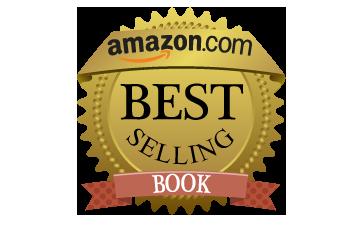
To buy wholesale as gifts to your clients and industry partners, call us at 732-414-6155
